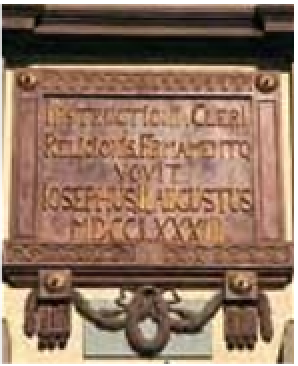Travel Reference
In-Depth Information
City Gates
Prague's walls started going up in
the 13th century, through which
the city was accessible via wall
gates, thus protecting the new
settlement from the distant
Tartars. But as developments in
military technology made walls
and moats less effective forms of
defence, Praguers found new
uses for their fortifications. The
broad ramparts became parks,
complete with benches, lamps
and even cafés. Prague kept the
habit of locking its gates at night
well into the 19th century.
Plaque, Clementium
Celetná
The medieval route from the
silver-mining town of Kutná Hora
in Bohemia passed down the
street known today as Celetná,
through Old Town Square and on
to Prague Castle. There's still a
lot of traffic on the gently
curving street.
d
Map N4
legend of the mummified arm
hanging above the door
(see
p52)
, but visitors should not
miss the opportunity to take in
one of the organ recitals held
here
(see p65)
.
d
Malá ◊tupartská
• Map N3 • Open 9am-1pm, 2:30-4pm
Mon-Fri; 9:30am-12:30pm, 2-4pm Sat;
2-4pm Sun • Free • Dis. access
Church of St James
The Gothic and Baroque
interior here wins the award for
Prague's creepiest sanctuary. The
church is best known for the
Ungelt
Also known as T†n
Courtyard, this was a fortified
merchants settlement in the 11th
century. The Baroque and
Renaissance houses were
completely renovated in the early
1990s, creating what is now one
of the Old Town's most charming
mercantile centres.
d
Map M3
Clementinum
Built as a Jesuit college in
the mid-17th century, the
Clementinum now houses the
National and State Technical
libraries. The astronomer
Johannes Kepler
(see p35)
discovered the laws of planetary
motion atop the observatory
tower.
d
K∫í≈ovnické nám∂stí 4,
Mariánské nám∂stí 5 & Seminá∫ská 1
• Map K4 • 221 663111 • Library: Open
9am-7pm Mon-Fri, 8am-7pm Sat
• Dis. access
Pietà carving, Church of St James
74










